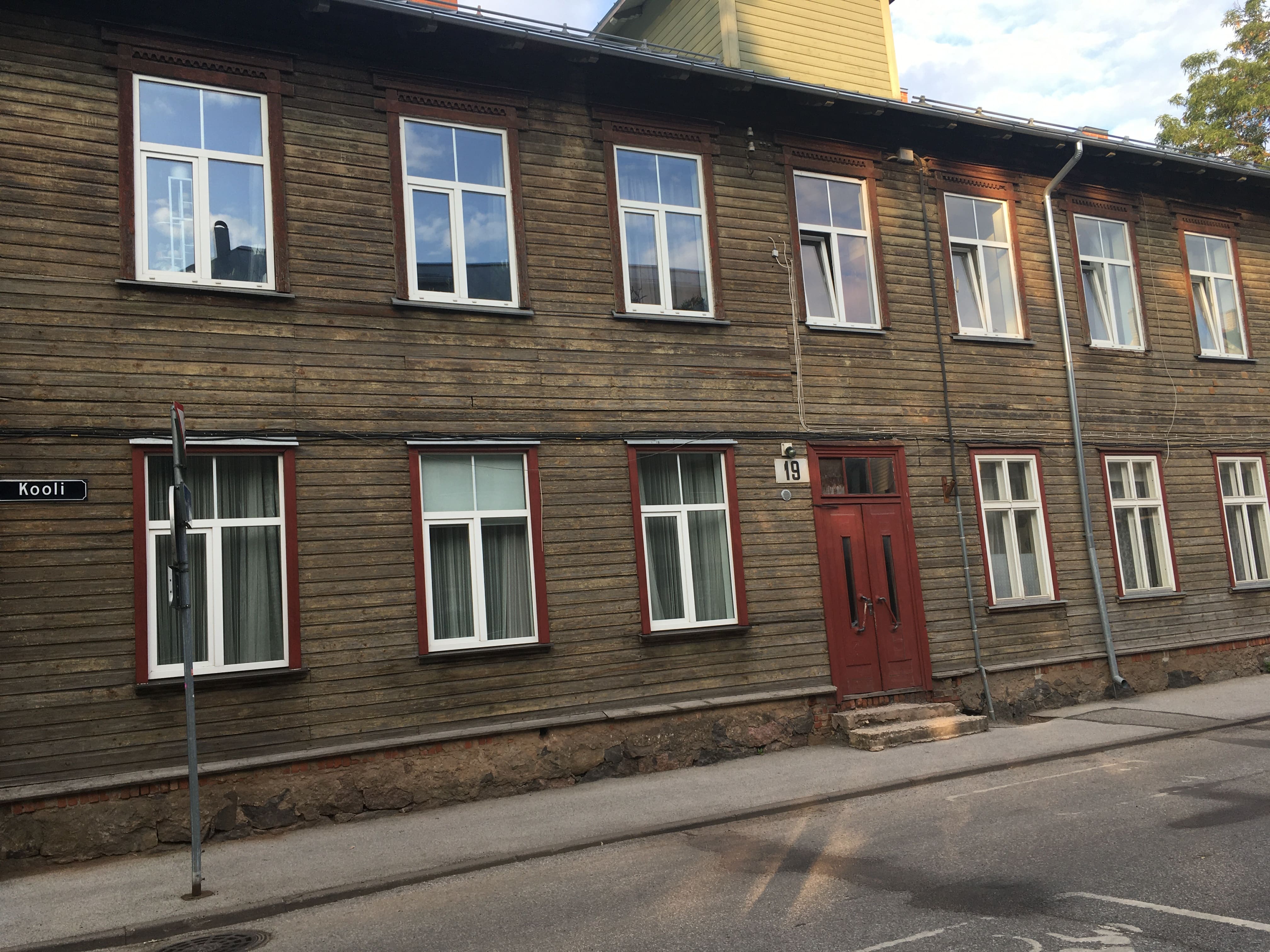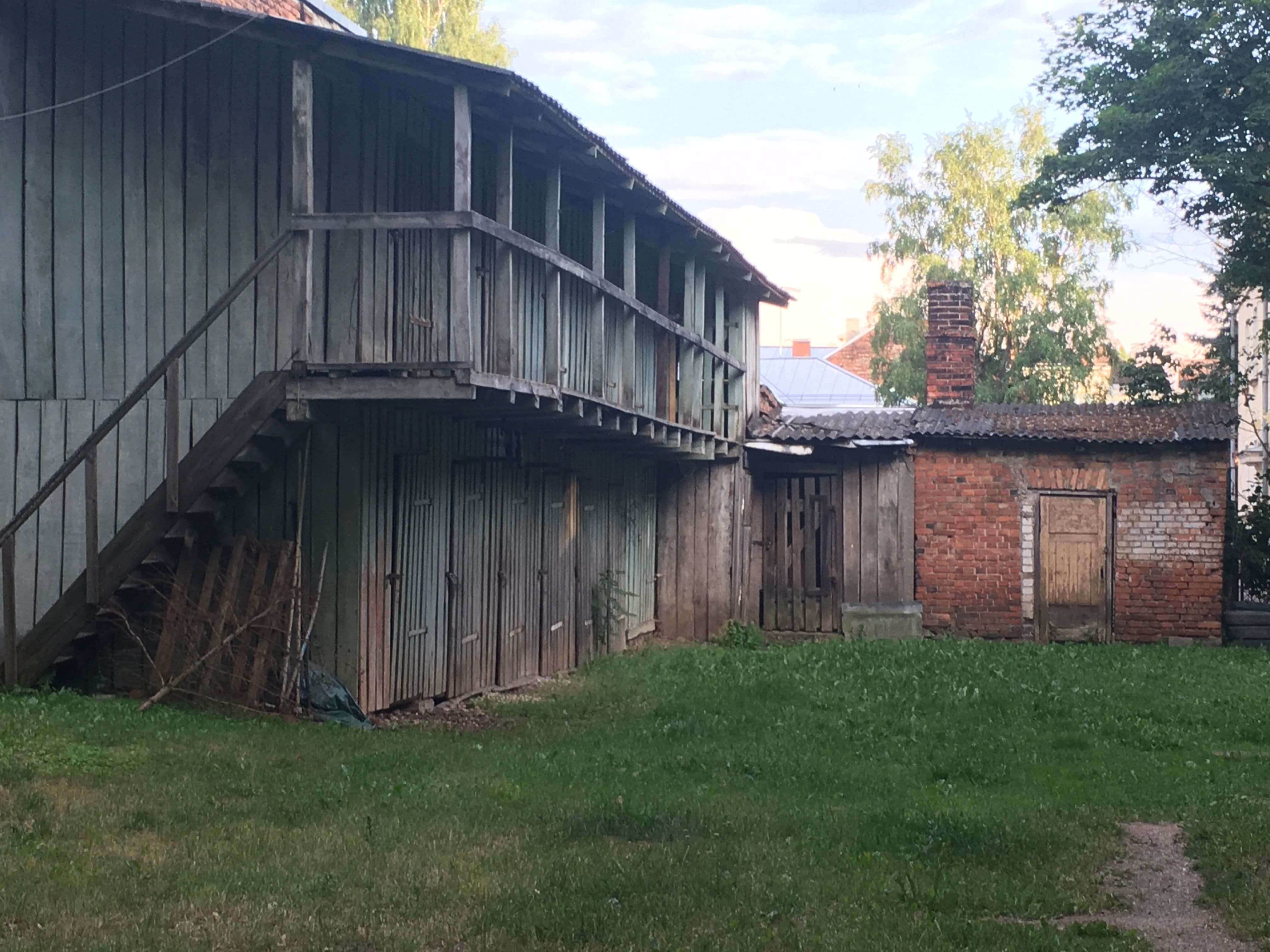
The house where my grandmother lived.
Estonia is full of old wooden houses. Many of them are a few hundred years old. You’ll find them in cities like Tallinn and in the countryside as well. These old wooden houses provided shelter for both families and often times their farm animals as well. In a land where trees grow like weeds and pop out of the roofs of houses, abandoned cars, and old boats, houses were built from wood. Traditional buildings have a thatched roof, but these days many have been updated with a metal roof. I’ve been told that thatched roofs last a long time if you know how to care for them.

Backyard of Kooli 18 Tartu
Many Estonian folktales navigate the space between the village, with its wooden houses, and the liminal space of the forest, where trees and animals have agency and opinions. The mythic characters react to human behavior in positive or negative ways depending on human behavior. This relationship is not always positive, but it reveals human nature and human attitudes towards the non-human world.
Even today, many old wooden houses exist in the cities and are still are heated with ceramic “ahju
In the 1960s, my grandmother lived in this old wooden house in Tartu. I don’t know if this is the house in which my father lived as a child. Perhaps, she moved there after WW II and the Soviet occupation forced people to live where the authorities decided.
I know very little about my grandmother. In Tartu I would walk over to the wooden house in which she once lived and try to imagine her life. Was she 85 and waking up at two in the morning to add wood to the ahi? Did she grow up in a wooden house in a small village where people lived at the crossroads of mythology and modernity? Did she walk to the turg (market) to buy mustakaid (blueberries) and seeni (mushrooms) in the fall?
What tales would she have told me as a child if she had not lived on one side of the Iron Curtain and I on the other? Walls, physical or maintained with guns, tear families apart or prevent them from ever meeting. Why do some people see these as solutions to problems?
The wooden houses function as part of Estonia’s past and future culture. Across the country, people restore the old wooden houses and give them new life. In these old wooden houses, I feel the energies of the people and mythologies that inhabited this land for thousands of years. I imagine my grandmother in old wooden houses.